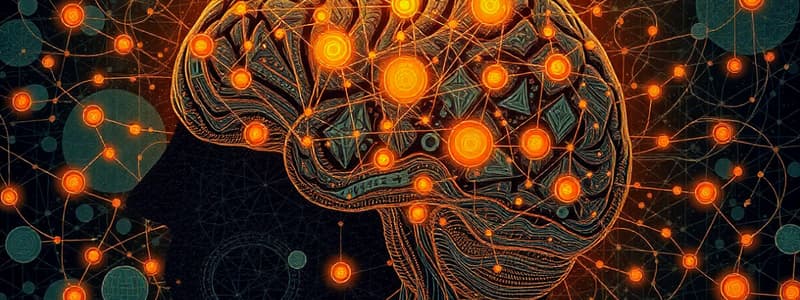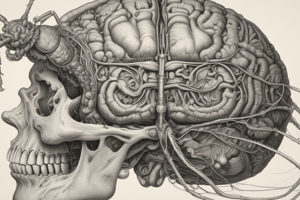Podcast
Questions and Answers
What type of lens is commonly used to correct short-sightedness (Myopia)?
What type of lens is commonly used to correct short-sightedness (Myopia)?
- Convex lens
- Cylindrical lens
- Bifocal lens
- Concave lens (correct)
Which alloy is NOT commonly made from copper?
Which alloy is NOT commonly made from copper?
- Nickel silver
- Brass
- Stainless steel (correct)
- Bronze
What does the phenomenon of a blue sky primarily result from?
What does the phenomenon of a blue sky primarily result from?
- Reflection of sunlight by the ocean
- Refraction of light through clouds
- Scattering of short wavelengths of light (correct)
- Absorption of long wavelengths by pollutants
Which of the following best describes a double displacement reaction?
Which of the following best describes a double displacement reaction?
Which of the following is NOT a characteristic of corrosion?
Which of the following is NOT a characteristic of corrosion?
What relationship exists between the lengths of the segments DC and EF formed by the tangents in the given figure?
What relationship exists between the lengths of the segments DC and EF formed by the tangents in the given figure?
Which statement correctly describes the positions of the points D, C, E, and F relative to the circles?
Which statement correctly describes the positions of the points D, C, E, and F relative to the circles?
Which geometric property is essential to proving that the lengths of DC and EF are equal?
Which geometric property is essential to proving that the lengths of DC and EF are equal?
What can be inferred about the nature of the tangents PDC and PFE in relation to the circles?
What can be inferred about the nature of the tangents PDC and PFE in relation to the circles?
How does the external tangential relationship of circles O and O' affect the properties of the tangents PDC and PFE?
How does the external tangential relationship of circles O and O' affect the properties of the tangents PDC and PFE?
Flashcards
Human brain structure/function
Human brain structure/function
The brain is the control center of the body, managing thoughts, actions, and emotions. It's composed of different interconnected regions each with specific roles.
Myopia (short-sightedness)
Myopia (short-sightedness)
A common eye defect where distant objects appear blurry but nearby objects are clear. Corrected with concave lenses.
Mendel's rules
Mendel's rules
Rules governing heredity, explaining how traits are passed from parents to offspring.
Define Neutralisation reaction
Define Neutralisation reaction
Signup and view all the flashcards
Sky's blue colour
Sky's blue colour
Signup and view all the flashcards
External Tangents
External Tangents
Signup and view all the flashcards
Direct Common Tangents
Direct Common Tangents
Signup and view all the flashcards
Prove DC = EF
Prove DC = EF
Signup and view all the flashcards
Tangents to a circle
Tangents to a circle
Signup and view all the flashcards
Properties of Tangents
Properties of Tangents
Signup and view all the flashcards
Study Notes
Q1 - Human Brain Structure and Function
- Describe the structure and function of the human brain briefly.
Q2 - Electrical Circuit Wires
- How many wires are used in a domestic electrical circuit?
- Write the names of each wire and their insulation colours.
Q3 - Definitions
- Corrosion: Define corrosion.
- Neutralisation reaction: Define a neutralisation reaction.
- Double displacement reaction: Define a double displacement reaction.
Q4 - Short Sightedness (Myopia)
- What is short-sightedness (myopia)?
- Explain short-sightedness with a ray diagram.
- This defect is corrected by which type of lens?
Q5 - Colour of the Sky
- Why does the clear sky appear blue?
Q6 - Alloys and Mendel's Rules
- What are alloys?
- Write the name and uses of two main alloys of copper.
- Explain Mendel's rules briefly.
Studying That Suits You
Use AI to generate personalized quizzes and flashcards to suit your learning preferences.




